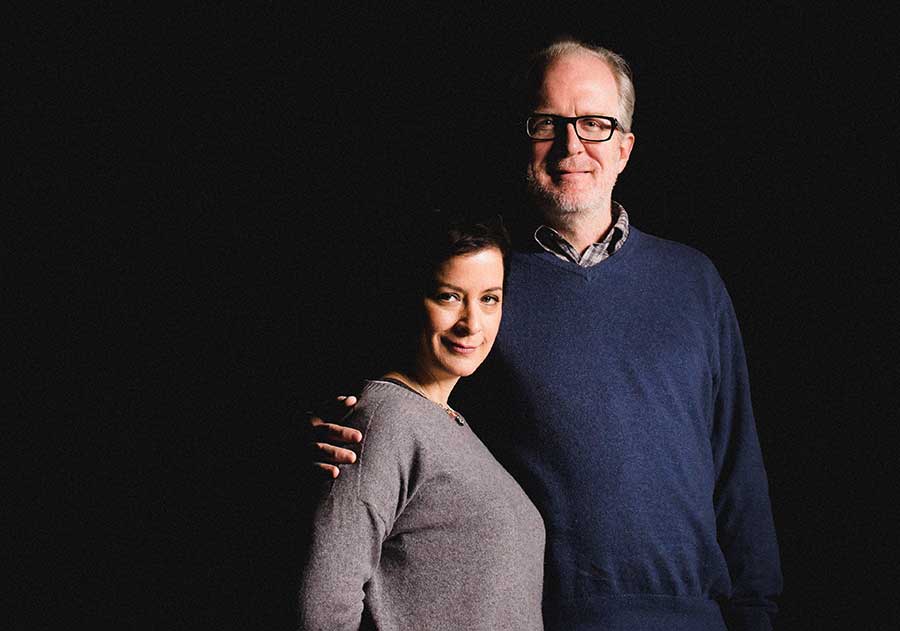Tracy Letts starred in the first mainstage show Anna D. Shapiro directed at Chicago’s Steppenwolf Theatre Company. It was 1999 and the play was Richard Greenberg’s Three Days of Rain. Letts remains convinced he wasn’t Shapiro’s first choice for the role, as he wasn’t in the company’s ensemble until 2002, but Shapiro, who didn’t join the ensemble herself until 2005, refuted his assumption.
“That’s actually weirdly not true!” Shapiro said with a laugh in a conversation with Letts at the theatre’s home in Lincoln Park, where she took up residence as the troupe’s newest artistic director last year. “Because I was doing my first show—and I had been waiting so long—I felt like I had to have my people with me because if I screwed it up, then that was going to be that.”
“It was kind of my first mainstage show too,” said Letts, who had understudied and performed in a production of The Glass Menagerie in Steppenwolf’s young audience series. When Shapiro cast him in Greenberg’s play, he was in Los Angeles performing in Steve Martin’s Picasso at the Lapin Agile, which had begun as the inaugural show in Steppenwolf’s upstairs theatre. “And if it hadn’t been good, I don’t know if we would have come back,” he said.
“I don’t know that I would be sitting here having this conversation with you, actually,” Shapiro added.
Thankfully, it was good, and Letts and Shapiro have remained among each others’ primary artistic collaborators. They first worked together as young upstarts when Shapiro was part of the now-defunct Big Game Theatre and Letts was part of the also-extinct Bang Bang Spontaneous Theatre. Since graduating to Steppenwolf, they’ve worked together on Letts’s Man From Nebraska in 2003, which was shortlisted for the Pulitzer, and Letts’s adaptation of Chekhov’s Three Sisters in 2012; Letts also acted in Shapiro’s production of Bruce Norris’s The Pain and the Itch in 2005.
But the credit that will remain in their artist bios forever is Letts’s Pulitzer Prize– and Tony-winning epic August: Osage County, which debuted at Steppenwolf in 2007 and transferred to Broadway in 2008.
“I have a feeling that regardless of whatever we do, that’s tombstone material,” Shapiro said of their work on the play. “It’s all right—we can just keep fucking up now because we have some tombstone material!”
Screwing up doesn’t seem to be in order, as there are many more challenges ahead. For her first mainstage project after succeeding aristic director Martha Lavey, who’d served in the position for 20 years, Shapiro will direct Letts’s new play Mary Page Marlowe, about the life of an ordinary woman in the Midwest from childhood (1940s) to old age (2010s). The catch? Six actresses (and a baby) will play the title character over the course of the non-sequential play.
Sitting in the aptly named “August: Osage County Room,” Letts and Shapiro talked like an old married couple. They swapped inside jokes and friendly jabs as they discussed what they’ve learned thus far in their careers and what’s still to come.
SUZY EVANS: How did you two first meet?
TRACY LETTS: My first recollection of Anna was when a small theatre company I was a part of here in Chicago—a very short-lived theatre company—wanted to do a production of Glengarry Glen Ross and somebody suggested Anna to direct it. We were so jazzed by the idea—or the others were, because I didn’t know who you were—that I think we, all of us together, called you and went over to your place and rang the doorbell.
ANNA D. SHAPIRO: That’s a fantastic story. I’m sure that’s true.
LETTS: And you opened the door and there were four or five of us that were part of the company, and I think that’s the first time I ever laid eyes on you.
SHAPIRO: I laid eyes on you before that. You did a play called The Diviners—this was around the time that we were college-aged, and I was at Columbia and a lot of my pals were at DePaul and you were friends with those guys. So I saw you in that play, and it was weird to see someone who was unfamiliar, because, not unlike now, Chicago theatre companies form out of affection and shared experience, and so you know who you’re going to see in these groups. And there was this weird dude who I had never seen before who was fantastic.
How did your relationship as actor/director lead to your working together as playwright/director?
LETTS: When we first worked together at Big Game, that was when I had started writing plays. I gave her Killer Joe at one point and she hated it.
SHAPIRO: Well, I didn’t get it. Can we say that? I would prefer to not be on record saying I didn’t like that play.
LETTS: A lot of people don’t like it.
SHAPIRO: It sounds so crazy now: Tracy Letts hands you a play and you’re like, “Whatever, this thing sucks.” You weren’t Tracy Letts! You were just a dude in my play handing me a fucking stack of pages that I was supposed to read. Nobody in that group was a playwright. Everybody was an actor. And I didn’t know how to read a play. To call myself a director was a reach.
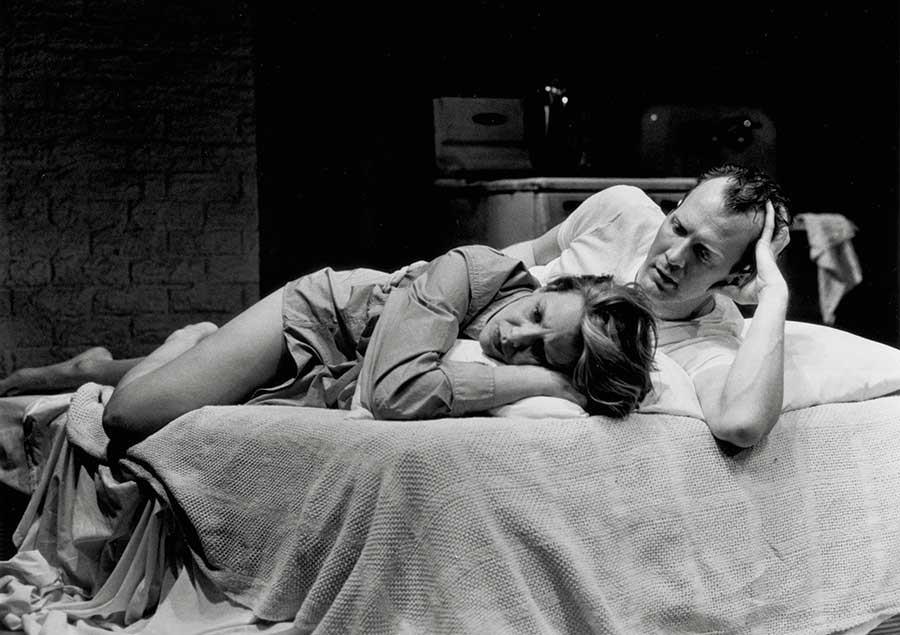
Tracy, you’ve said in other interviews that you think about a play for a while, then you write it quickly. Was that was your process for writing Mary Page Marlowe?
LETTS: This is always where I get into trouble because I start to bullshit a little bit. I see plays that concern themselves with the world—social plays, political plays—and I admire them. Rather than tweet my opinions about politics or the world or culture or anything else, I think, “Well, I’ve got a voice. I’m a playwright. I can put my feelings about those things in a play.” But invariably, I don’t wind up doing that. These days anyway, my focus is internal. I don’t know why.
SHAPIRO: Because we’re dying.
LETTS: Yeah, maybe because we’re dying. For me, Mary Page Marlowe is an internal examination—an examination of identity, of what makes a person a person. What makes you the way you are? I was inspired in that investigation by the death of my mother. Mary Page is not my mother; Mary Page makes a lot of mistakes my mother didn’t make, thank God. The death of a parent not only causes you to think a lot about mortality, but your own mortality, which also makes you think about your life’s journey.
The structure of the play is unique: Seven different people play the title character, and the scenes are not sequential. What was the casting process like for the role?
LETTS: I said to Anna at one point, “There are areas in which I don’t care that the audience might be confused, but I always want them to know who Mary Page is.” And so we always felt that there should be a continuum in terms of her look—that there’s a believable aging process, and that she carries some of the same character fiber.
SHAPIRO: You can go a lot of different ways. If you look at it and you go, “Okay, there’s this woman moving through her life in this non-sequential way, seven people play her,” and you want to do an “I’m every woman” thing, she should be every different race in the whole world; we talked about that. Basically, it isn’t an “I’m every woman” story. It’s a story of a really particular woman, and as awesome as it is being able to cast seven women in a play, it’s a little tough with them all being white. But quite frankly, because of who Mary Page is, because of where she lives, because of the time she lives, the idea that a black woman’s experience in the part of the world that she lives in at this particular time would be even remotely the same experience as a middle-class white woman would make it look like Tracy doesn’t know what the fuck he’s talking about. So we figured out what the essence of this person was for us, and who of all of the incredible people we saw fit the most into that essence.
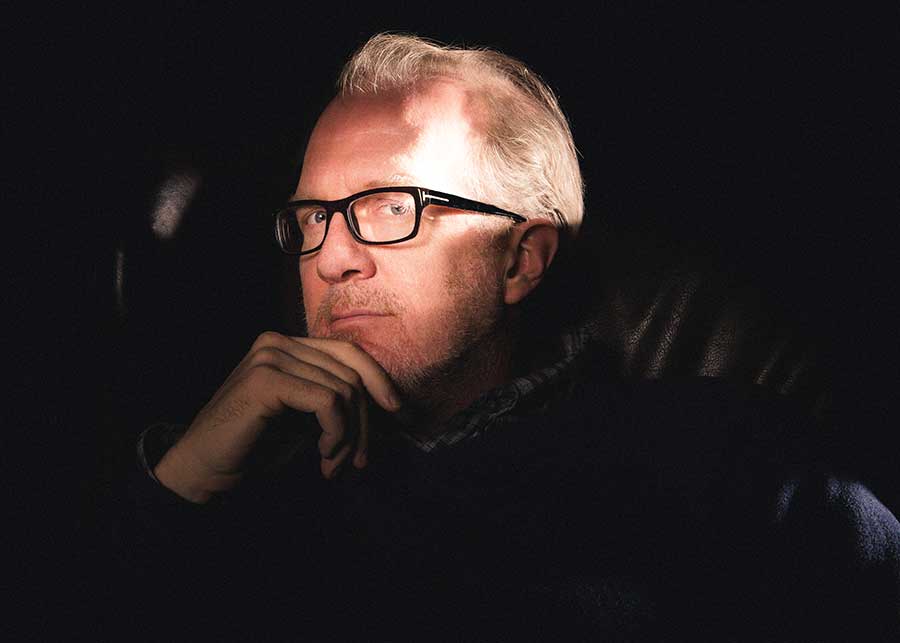
You have a great ensemble here at Steppenwolf, but a lot of the actors in this production are not ensemble members. Tracy, when you write a play do you think of the ensemble?
LETTS: I do consider ensemble, sometimes more than others. August reflected who we were as an ensemble at that time; I knew that there would be a mix-and-match process of finding ensemble members we could plug into the roles and that’s exactly how it worked out. Superior Donuts was written with a couple of different ensemble members in mind, and they were able to play the parts, which was very gratifying—sometimes you write things with ensemble members in mind and they’re not able to play the parts and that’s very frustrating. Mary Page wasn’t written with ensemble in mind so much, perhaps not at all.
SHAPIRO: That was one of the challenges programming it. Tracy was very straightforward with Martha and said, “Look, there’s all these women in this, and quite frankly, there’s only one or two of our people that can do this.” That becomes an artistic director call—something I’m learning more about every day. What do we do if there’s only one or two people that we could give the part to? Do we not do Tracy’s play?
LETTS: Also—this goes into the life of an ensemble theatre company—we’re getting older, and as a playwright, it’s actually frustrating to write a play and say, “Geez, I have a lot of roles in this play for younger women, and they’re just not in our company.” We have two women in our company under the age of 50. It is also one of the ways you find ensemble members, by casting younger people in these shows. Hopefully they come and they do another show, a show after that, and we say, “We like that person,” and we wind up adding them to the company.
Anna, what are you thoughts on expanding and diversifying the company as artistic director?
SHAPIRO: The mandate of the person who sits in the artistic directorship of Steppenwolf is not vague; it has to do with cultivation of the ensemble, and that’s as much about who’s gonna be in it as who’s in it now. We’ve had a lot of meetings about it, and I think everybody feels that we’re really at a point where we have to add some people and yet none of us want to do that in an inorganic way. So it’s exactly as Tracy’s saying: We’re going to start programming in such a way that there are more opportunities for repeated relationships with actors and writers. Probably not so much directors right now, mostly because we have people in the company who are wanting to direct, and I don’t want to lose that surplus for them.
So it’s a little bit of a shift: You go from programming solely for the people you have to having an agreement, and it has to be an agreement, to go, “Okay, guys, we’re going to be doing some stuff, and it’s going to create opportunities for other people.” The life of the theatre depends on that.
And, quite frankly, for us, our guys—even our old guys—they are interested in having more diverse conversations than we are capable of having. It sucks to feel like, “Well, we can’t do that show because we don’t have those people in our company.” That sentence is tired and everybody feels it. Nobody doesn’t want to open up the doors of this place, so it’s a big push for all of us right now that we’re all behind and we’re making big programmatic changes to make that happen. As sad as this sounds, we are the younger generation of this company. All of us were really inspired by the people who founded this company, and it is time to turn over that title to other people. So now that we are running the joint—which we hadn’t been—we’re going to make room for them because those guys made room for us.
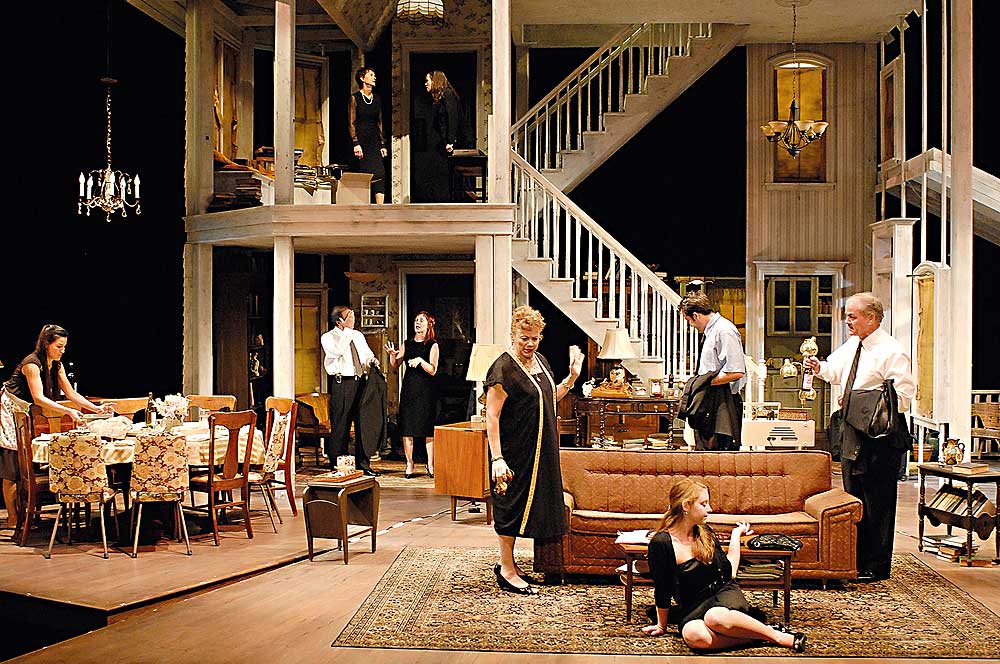
Anna, you had been spending a lot of time in New York directing shows on Broadway. What made this the right time for you to come back and lead this transition at the company?
SHAPIRO: It’s all Tracy’s fault. [Both laugh] We knew that it was time to transition and to bring someone else into the seat. I had wanted to do it for a long time, and then I didn’t want to do it for a long time. And then it was a perfect lining up of things. I love the work that I get to do in New York. It’s super fun. I don’t imagine that I will get to do it as much, but I’ve just said to the people that I work with there, “If you want me, I’ve got to start here.” So that’s fine. And I have two little kids. We were in New York all year last year as a family and that was really fun, but they start first grade next year. A commercial freelance life is exciting, a crazy roller coaster that I love, but it doesn’t bode well for the most important people in my life. So if you combine the most important people in my life, my husband and my children, and the most important people in my professional life, which is the Steppenwolf Theatre Company—if both of those groups of people benefit from me sitting in this chair, or at least believe they do, it seems really too perfect not to say, “Okay, I’ll do it.”
LETTS: It’s also true that because of where Anna’s gotten in her profession, pretty much every important theatre in this country let her know that the door was open for her if she wanted to walk in and take it. And that’s a point that as a theatre company, we had to have a conversation and say, “She doesn’t need to be somewhere else; this is where she needs to be.”
Anna, you mentioned that your work will have to begin at Steppenwolf and then move to New York; Tracy, your last two plays that started at Steppenwolf moved to Broadway. Are there plans for Mary Page Marlowe?
SHAPIRO: As Martha would say, we like to stick to our knitting here. I love being here. If I could direct every play here first, are you kidding me? That would be fantastic! But I like being there, and I like moving stuff there. I feel like we are the best theatre company in the United States of America, and what we do I’d like everyone to see. It’s not complicated for me. I think it’s complicated for other people, because the dynamics of commercial production versus what they feel they understand about not-for-profit production—those things are complicated and they’re nuanced and they’re emotional and they’re cultural. So I think we’ll be managing all those things. But I’m not not going. And if people don’t want to go, they don’t have to come with me. We have fun when we go!
LETTS: August changed things for our institution in ways we couldn’t anticipate at the time, and in ways I don’t know that we fully understand now. We are ambassadors and we take that responsibility seriously, and August changed the terms of that ambassadorship. But this is not a place where we start out-of-town tryouts for New York shows.
SHAPIRO: We’re not like the farm team. We couldn’t act like that if we wanted to, because we’re all incredibly competitive with everyone else and each other. We want to do the best stuff here, so we do it. My job is to make sure that our work environment is protected, but that has nothing to do with what happens after we’re done here. It just doesn’t. What happens after we’re done here can really change the lives of the ensemble members for whom I’m responsible, and so I care about that.
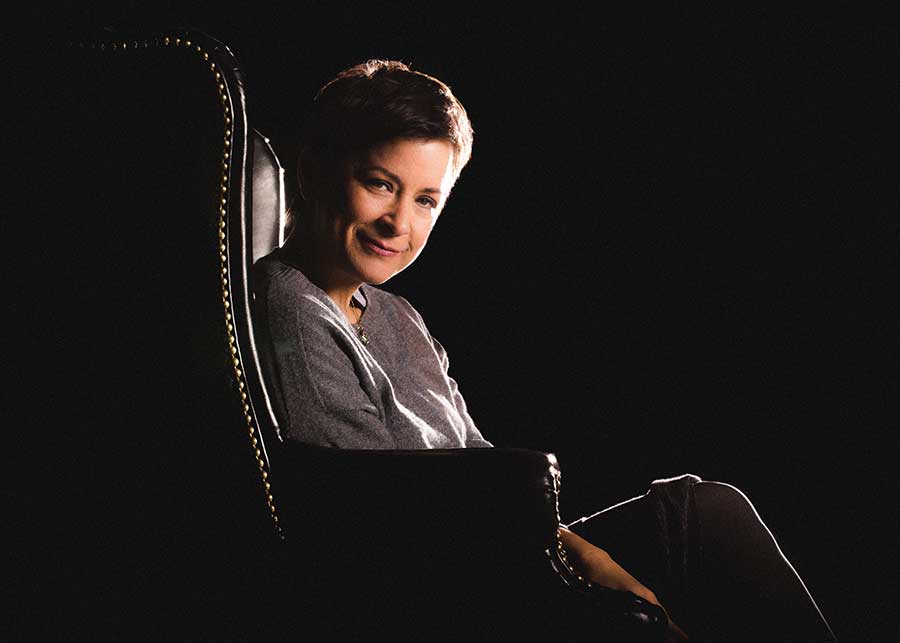
Tracy, what are you looking forward to about Anna being the artistic director?
LETTS: This is a really exciting time to be here at Steppenwolf. There’s a lot of good energy and new ideas, and I’ve always been excited to work with my company. This is my artistic home, and it has been for a long time. And I’ve been writing more of late; I’ve been generating more work. Are you kidding? I’ve got the best possible situation any playwright could possibly have—that I can be reasonably assured that this company’s going to do my work when I write it.
Anna’s real fucking smart and she’s a great director, and she’s bossy, which is important if you’re going to be a boss.
Anna, are you excited to have Tracy’s work back on your stage?
SHAPIRO: Totally. I basically said, “I’m not taking this if you’re bailing and going somewhere else.” When you start directing plays, part of what you’re doing is you’re creating rooms that are rooms you want to be in. Now I feel like we’re creating the theatre we want to be in, and that’s a really exciting thing to be able to do with people that you’ve known since you were basically a kid.
It’s pretty poetic, Anna, that Tracy was in the first mainstage show you directed, and now the first show you’re directing as artistic director is by him too.
LETTS: Yeah. In your face, Bruce Norris!

